Globetrotters
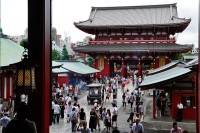 DAY 1 – THE OLD & NEW
DAY 1 – THE OLD & NEW
| Morning | Asakusa |
| Afternoon | Ueno park |
| Evening | Akihabara’s Electric Town |
If you’re just arrived in Japan from Narita airport, the best welcoming you can get to Tokyo is by starting off with something traditional. Start in the old part of Tokyo, Asakusa (not to be confused with Akasaka). The massive and impressive Sensoji temple is a fanatic introduction to Japanese Buddhist beliefs & traditions. Along with its markets and surrounding streets, you’ll want to spend the majority of your morning there.
On the way back from Asakusa, if you’re in Tokyo during peak season (cherry blossom season), one of the most popular city escapes & parks for seeing the beloved pink trees is in Ueno Park which also features many museums & other attractions (see cultural itinerary for more about these).
Having had a decent and peaceful introduction to the city & its origins, now it’s time to venture into the 21st century. Akihabara & the Electric Town might be thought of by some as just a market for tech and gaming geeks. But it’s not just games and Anime (and if you’re after those, even better). With mobiles and technology playing such a dominant part in our lives the Electric Town can be enjoyable for all travellers. It’s an amazing and eye-opening cultural experience into modern Japanese culture. Just taking a look at some of the fascinating Japanese gadgets and inventions that you can’t get back home will leave you with lasting memories and photos.
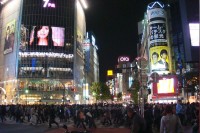 DAY 2 – WESTERN TOKYO
DAY 2 – WESTERN TOKYO
| Morning | Tsukiji Fish market |
| Afternoon | Harajuku |
| Evening | Shibiya & Shinjuku |
Perhaps not everyone’s cup of tea, but the the fish market in Tsukiji is usually high on a tourists to-do list. The auctions for the fish start as early as 5am!
Hop on a train out west, where there are three main mini-cities worth discovering: Harajuku, Shibiya, and Shinjuku. Start with Harajuku, most well known for ‘Harajuku girls’ and crazy youth fashions…but the main sight to see here is the Meiji Shrine. Here you will be introduced to Japan’s other main religion, Shinto. Set in rainforest, getting to the shrine is an enjoyable & peaceful walk in itself. After this, explore Takeshita Dori back towards the train stain, which is the main pedestrianised shopping street in Harajuku. Here is where you’ll need to keep your eyes peeled for the zany & quirky teens that like to dress up as Anime characters & their own Anime-like creations. Depending on time, you may want to wander through the Yoyogi Park nearby for a bit of relaxation and walk past the Olympic area.
Next hop on a train to nearby Shibuya, world famous for it’s crazy pedestrian crossing, the busiest in the world. If you have never heard of it, you will most likely recognize it from music videos, movies and the like. Make sure you visit during rush hour to see the full effect of the crossing! Shibuya is also a popular place for restaurants, karaoke, shopping, department stores & a popular Japanese youth culture hub. If the night is still young, get back on the train and head to the world’s busiest train station in Shinjuku, and take the exit for Kabukicho, the red-light district. It’s a little bit seedy, but a lot of fun and another pocket of Tokyo not to be missed.
Vacationers
Follow the Globetrotters itinerary for Days 1 & 2
DAY 3 – CENTRAL TOKYO
| Morning | Imperial Palace’s Gardens |
| Afternoon | Ginza |
| Evening | Tokyo Tower & Ropponghi |
After a crazy night in some of the city’s busiest areas, it’s time to chill a little. Right near the main Tokyo station is the Imperial Palace’s Gardens, but don’t hope to see inside. Royalty currently live inside the palace and it is only opened twice a year. However the surrounding gardens, the walls and bridges (particularly the Nijyubashi bridge) are very picturesque and peaceful.
Next check out the shopping at Ginza, only one stop from the main Tokyo station. Ginza is one of the more posh areas with many boutiques and high-fashion stores. Here is also where the world’s most photographed pedestrian crossing is (not the busiest, which is in Shibiya). One of my fav places in Ginza is the Sony Centre where you can be the first to take a look at some of the newest & most cutting edge of Sony products.
The late evening, just as the neon lights start turning on, is probably the best time to head to Tokyo’s own Eiffel Tower, the Tokyo Tower. Perhaps it’s a little cliche and overly touristy, you decide. Either way, there are fantastic views over the city from the top. Later in the evening, head to Ropponghi, another hub for nightlife with an array of clubs, bars and restaurants.
Culture buffs
I’m still writing this one, check back again soon!
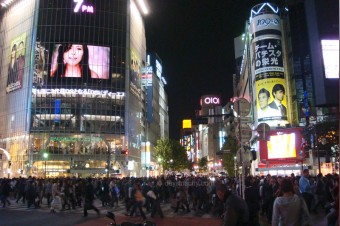
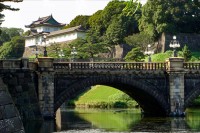
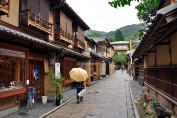
This website is so useful! Straight and to the point